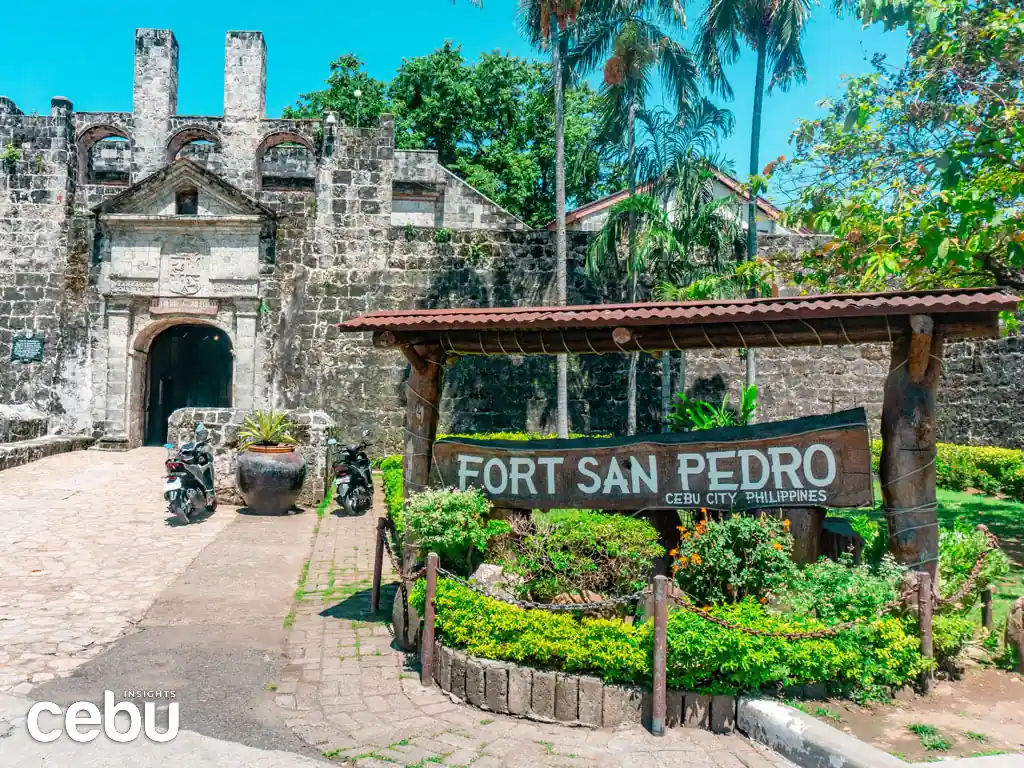The Fort San Pedro is a former military structure that hearkens back to years of history in the Queen City of the South.
The many beaches and islands of Cebu make it an ideal destination for a much needed vacation getaway, but it is just as unique and interesting with the countless historical attractions you can visit in and out of the city.
At the heart of Cebu are some centuries-old tourist spots that have stood tall for many years. Before the massive infrastructure towering in the streets today, there was one in particular that played a pivotal role in Philippine history.
Fort San Pedro is the oldest and smallest fort in the Philippines, and it is one of the most famous Cebu heritage sites. It is a staple for field trips, dates, picnics, and even wedding receptions. Located in the middle of the metro, you can easily access the fort whilst visiting other famous attractions within the area.
THE HISTORY OF THE FORT SAN PEDRO
The fort’s stone walls show its importance in Philippine history during the Spanish colonial period.
Built by Spanish conqueror Miguel Lopez de Legaspi, it served as an army base in the early 17th century. The Filipinos then took over the fort and turned it into their own stronghold during the Philippine revolution.
Fort San Pedro is triangular, with one side facing the city and two facing the ocean. Canons were equipped with seaside walls to protect themselves from any incoming attacks, while the front was covered with a massive stone wall.
You can start your morning with a stroll in one of the most famous tourist spots in Cebu City.
The fort still stands today, and it is one of the most popular tourist spots in Cebu City.
Both the large stone walls and massive canons can be found inside Fort San Pedro, and a stroll along the walls gives you a great view of the area below.
IMAGES OF WAR
Remnants from the past can be seen inside Fort San Pedro.
Bastions are also placed at the corners of the fort. These are fortified positions used to protect a specific unit or item. Images of the Virgin Mary and other saints were placed there to keep them safe. Right now, they are dark and empty.
The long walkway is a great place for a morning or afternoon stroll. The flowers add color to an otherwise barren structure. It also makes for a very photogenic and instagrammable portion of the fort.
Among the leisurely things to do in Fort San Pedro is taking instagrammable photos along the fort's walls.
A SERIES OF EXHIBITS
A stroll is merely a sample of the things to do in Fort San Pedro, as it houses several artwork depicting many historical figures in Cebu’s history. If you ever wondered what Cebuanos and Spaniards in the past looked like, this is a great place to find out.
The Gallery houses some interesting artwork depicting significant figures in Philippine history.
If you are a photography aficionado, head on down to the Viviende del Teniente, where “Pistaym” is located. This is a gallery of curated old photos of Cebu. You can get an idea of what the older areas in Cebu like Colon and Carbon looked like before their major changes.
There is also a gallery of photos of old Cebu, which includes a picture of Plaza Independencia, where the fort is located.
Finally, there is a huge open space inside the fort’s walls that you can just sit down and relax in. Though probably less interesting compared to the walkways and galleries, it is nonetheless an essential part of the fort due to it being a famous spot for gatherings. Wedding receptions, parties, and social events are also held inside the fort’s walls.
RATES
Entrance Fee: ₱30
Operating Hours: 8AM to 7PM
HOW TO GET THERE
The fort is located in the downtown area of Cebu, inside the popular nature park, Plaza Independencia. You have several options of public transport, like jeepneys, taxis, and even buses that pass by the area.
There are many other famous historical tourist spots in the Philippines that are just a walking distance from the fort, such as the Basilica del Sto. Niño, and it is only a few minutes away from both SM Malls, SM Seaside and SM City Cebu.
As you enter the fort through the Plaza Independencia, you will see several pictures of the founding of Cebu.
Though it is merely a small part of the long and fascinating history of Cebu, Fort San Pedro already has a legitimate status due to its endurance and significant past. As long as the sturdy stone walls continue to stand tall, this former military base will remain an important part of Cebu.








